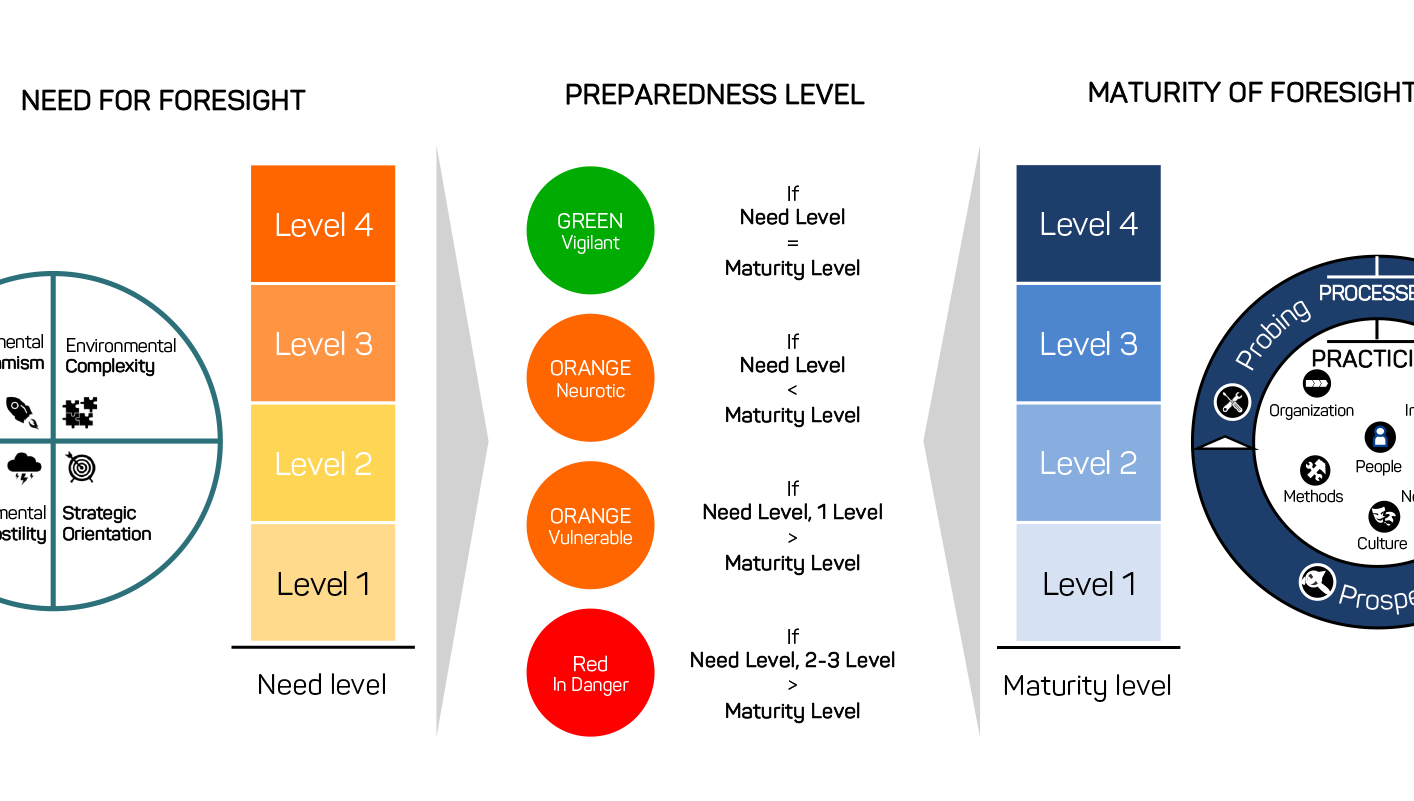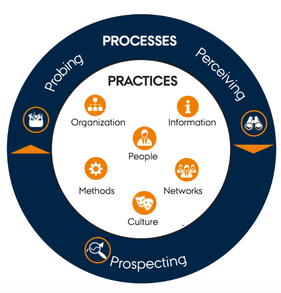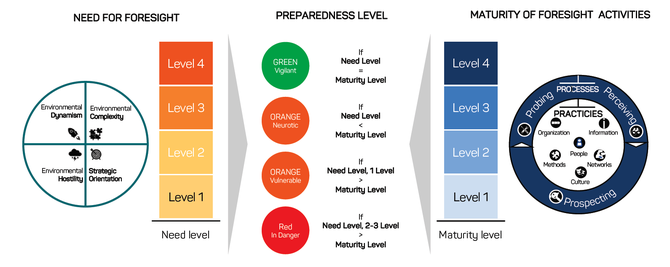
Relaunch Foresight Newsletter
Read the whole newsletter from October 2018 here and subscribe for the latest updates!
Newsletter preview: Methodes and tool
How can a firm in a changing industry ensure growth and longevity? The findings from the latest Foresight Benchmarking Report show a model that suggests building future preparedness based on the three processes: Perceiving, Prospecting and Probing.
Perceive continuously, by building sensors that allow your firm to detect change systematically and broadly.
Best practice: Future-prepared firms build continuous scanning capabilities and trend monitoring systems.
What can you do: Build a strategic radar to detect and monitor market trends and technologies.

Prospect systematically to deeply understand key drivers of change and anticipate tipping points of important or disruptive change in your industry.
Best practice: Future-prepared firms continuously make sense of their environment and renewed opportunities within it through systemic thinking.
What can you do: Use scenarios and build systems dynamics models to anticipate unexpected changes and future markets.
Probe into new markets with dedicated budgets and incubator units to learn and, where possible, shape the rules of the game in future industries.
Best practice: Future-prepared firms use probing to validate prospective understanding and overcome the chasms towards future business growth.
What can you do: Validate identified future solutions early by taking them into real-world environments through smoke testing, prototyping, or venturing.
Preview from the category Case studies
Based on our 10+ years of research in 450+ companies, our co-founder Prof. René Rohrbeck developed a benchmarking model which enables us to assess organizations’ future preparedness. The identification of improvement potential in a medium-sized company is demonstrated in the following case study.
Situation
We recently benchmarked a family-owned semiconductor supplier with around 1.500 employees. The industry has fairly mature structures but fast innovation cycles. The company is organized structured in several Business Units (BUs) that serve different markets and are quick in responding to customer needs.
Approach
We partnered with the company to assess its future preparedness in terms of its organizational capabilities, the ability to detect and understand mid- to long-term developments in technology and on the market by applying the Benchmarking Model for Future Preparedness. Data was collected through a small series of interviews with key managers, an online survey and a document review.

Results
Based on the Foresight maturity assessment, Rohrbeck Heger identified the need for Foresight activities in the organization to enable the supplier to identify opportunities outside of its core markets, which requires the organization to scan for opportunities across and outside BUs.
The supplier decided to build-up an integrated radar as a central Foresight instrument. In parallel, a Market & Technology Team was created to sustainably embed the Radar into the organization.
Find the whole case study here.
Read the whole newsletter from October 2018 here and subscribe for the latest updates!
